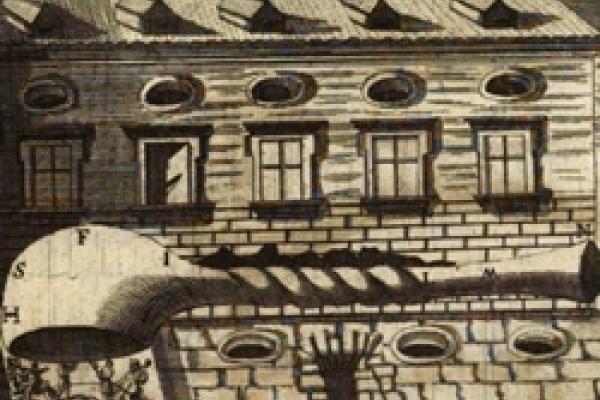
"'Like An Earthly Paradise': Concealed Music and the Performance of the Other in Late Renaissance Pleasure Houses," presented by Arne Spohr, Bowling Green State University.
Modeled on garden villas of Renaissance Italy such as the Villa d’Este and Pratolino, pleasure houses (Lusthäuser) and their surrounding gardens became important spaces for courtly representation north of the Alps, particularly before the outbreak of the Thirty Years’ War. There is ample evidence that pleasure houses were sites of acoustic experiments, often in conjunction with visual arts. This presentation explores a particular spatial arrangement in which musicians were hidden from view, so that their sound created effects of “magic and mystery” through the “socially abnormal rupture of sound from sight” (Richard Leppert). A significant number of important Lusthäuser contained built-in provisions for this concealed music, among them the Lusthaus in Stuttgart (built between 1583-93), the Dresden Lusthaus (1589-1626), the Rondell in Jindřichův Hradec (Neuhaus) / Bohemia (1591-96), and Rosenborg Castle in Copenhagen, Denmark (1606-34).
This presentation surveys the individual settings of concealed music in these buildings, its concurrence with visual arts, and technical provisions for the transmission of sound such as conduits and metal pipes. Drawing on travel accounts and festival descriptions as primary sources, the author presents two case studies that shed light on the function and symbolic meaning of concealed music within the context of courtly ceremonial: a Stuttgart wedding of 1609, and a visit of a French diplomatic mission to Rosenborg Castle during the festivities of the “Great Wedding” of 1634. The peculiar spatial arrangement of concealed music was not a mere practicality or a playful divertissement; rather, it evoked arcane philosophical ideas such as the music of the spheres, through which princes could stage themselves as the ultimate sources of sound and thus of earthly harmony, order and peace.
Arne Spohr is assistant professor of music at Bowling Green State University and a postdoctoral research fellow of the Herzog August Bibliothek Wolfenbüttel (Germany). Professor Spohr is the author of a book entitled “How chances it they travel?” Englische Musiker in Dänemark und Norddeutschland (English Musicians in Denmark and Northern Germany), which reconstructs the musical exchange between England, Denmark and Germany in the years around 1600. His articles have appeared in Die Musik in Geschichte und Gegenwart, the Händel-Lexikon, the Historic Brass Society Journal and the Danish Yearbook of Musicology. He is currently working on a second book in which he explores sonic experiments in Renaissance and Baroque court culture.
Upcoming Musicology Events
